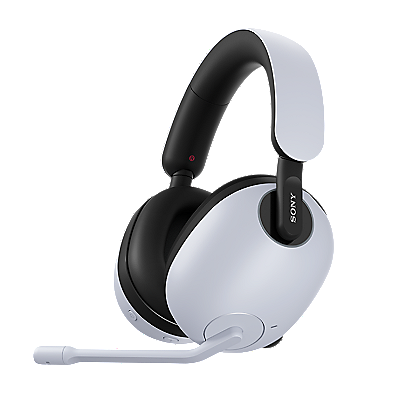The picture looks too big, stretched, does not fit the screen, or parts of the picture appear to be cut off.
How to get a full screen on the TV by adjusting Screen Settings.
Televisions have to handle a variety of inputs and types of signals. Depending on the type of signal being received, the TV needs to process this signal and determine how to display it on the screen.
There are settings in the television that can be used to select the way the signal is processed and displayed on the screen.
If there are lines on the screen, the screen is blurred, has double images, is too bright or dark, or has odd colors, refer to How to troubleshoot TV picture and screen issues
IMPORTANT: In this topic, TV settings to display the appropriate size of image on the TV and its effects are introduced. However, depending on the target image, note that it may not be solved by TV settings. Check the following items in advance.
Items to check before changing settings:
- Check the TV menu - If the menu is also stretched or distorted, the TV may require service.
- Change to a different input source - Check Cable, DVD, Blu-ray, etc. If only one device has an issue, check the settings on that device rather than the TV.
- Check the content - The program, movie, or content you are watching may be broadcast or recorded in an aspect ratio that will not fully fill your screen or may be displayed as stretched or distorted. For example, some movie content is recorded in a 21:9 Cinema format that will display with black bars above and below the picture when viewed on a widescreen (16:9) TV.
- Check Closed Caption (CC) and Extended Data Services (XDS) - If these features on the TV are turned on, this may cause the picture to be stretched, distorted, or cut off. Try turning off Closed Caption or Extended Data Services to see if the issue is resolved.
- The issue may be with the program - The top or bottom of the screen may be covered by banners or tickers when watching some news or sports programs. These are part of the broadcast signal and cannot be changed or removed.
- Some options may not be able to be changed - Some devices and TVs do not have the capability to change the aspect ratio of the picture when a 720p or 1080i signal is being output or received.
Settings Sections:
Setting the device connected to the TV
Setting the TV - Automatic Modes
Setting the TV - Manual Modes
Setting the TV when connecting a PC
Setting the device connected to the TV (back to top)
The first step in determining how to set the television is to check the signal coming into the TV to make sure it is set properly. The device that is connected to your TV may have settings that affect the way the signal is output to your television. These devices may include:
- Cable Boxes
- Satellite Receivers
- Digital Video Recorders (DVR)
- Blu-ray and DVD players
- A/V Receivers
- Gaming systems
- Personal Computers
- Other video devices (cameras, camcorders, etc.)
- A: Cable, Satellite, Blu-ray, DVD, etc.
- B: TV
Settings in these devices can affect the resolution (480, 720, 1080, 2160) and aspect ratio (4:3, 16:9) of the signal and can affect how the picture is displayed on the TV. For more information, refer to the What do the terms Resolution and Aspect Ratio mean for my television? answer.
Generally, the settings of the device connected to your TV should be set to match the highest resolution your TV can accept (480, 720, 1080, 2160). If you have a wide-screen TV, the aspect ratio of the device connected to the TV should be set to 16:9 if possible.
Setting the TV - Automatic Modes (back to top)
IMPORTANT: To find the settings for specific models, please check Operating Instructions on your TV.
Most televisions have settings that can automatically determine the best way to show the picture on the screen. These settings can be accessed from the menu of the television. Depending on your model, access the settings from the remote control as follows:
NOTE: If your remote control has a button label Wide, Zoom or go to the next section Setting the TV - Manual Modes.
How to turn on/off Auto Wide
- Open the
Settings screen. How to access Settings
- The next steps will depend on your TV menu options:
- Select Display & Sound or Picture & Display — Screen.
- Select Display or System settings — Screen.
- Select Screen.
- Turn on the following settings (if available)
- Set Wide mode to Auto or Auto Wide to ON.
- Set Auto Display Area to ON.
NOTE: When Wide mode is Auto or Auto Wide is ON, it will automatically changes the wide mode according to the input signal from an external equipment. If you want to keep your preferred setting, select Off.
- Press the Home or Menu button to exit the settings.
Play content from your connected device(s) to see if this resolves the issue. If not, continue to the next section.
Setting the TV - Manual Modes (back to top)
Some signals received by your television may not be displayed correctly with the automatic modes. In this case you can manually change display modes to try to correct the issue.
Check your remote control for a button labeled Wide, Zoom or . This button will cycle through the available Wide Mode settings that may allow the signal to be displayed correctly.
Press the button on your remote control repeatedly to change the wide mode.
- A: example of a button on the remote
NOTE: If your remote does not have one of these buttons, the settings are available in the menu of the TV. Access the Screen settings the same way you did when selecting the automatic modes, but select the Wide Mode option. A description of the various Wide Mode settings is shown below:
IMPORTANT:
- Not all Wide Mode settings are available on all models.
- Some TVs cannot change the aspect ratio when a 720p or 1080i signal is being received.
- Be aware that the picture may appear stretched or parts of the picture may be cut off when using a zoom or wide mode option. If you are watching a sports program or a news broadcast, scores and news ticker information may not be viewable. In these cases, you may want to make sure your TV is set for Normal viewing.
| Mode | Description | How content is changed by this setting: Content in 4:3 Aspect Ratio | How content is changed by this setting: Content in 16:9 Aspect Ratio |
|---|---|---|---|
| Normal |
4:3 Source - displays a 4:3 picture in its original size, with side bars to fill the 16:9 screen. 16:9 Source - displays a 4:3 picture that has been horizontally stretched to 16:9, in 4:3 format. | ||
| Zoom | Displays a 16:9 picture that has been converted into 4:3 letter box format, in the correct aspect ratio. | ||
| Wide Zoom | Enlarges the picture, preserving the original picture as much as possible. | ||
| Full | Stretches a 4:3 picture horizontally to fill a 16:9 screen. Displays a 16:9 picture in its original size. | ||
| Horizontal Stretch | Stretches the picture horizontally keeping the original vertical size. This is only available with 720p, 1080i, 1080p and 1080/24p sources. | Not Applicable | |
| Captions | Enlarges the picture horizontally, while fitting captions in the screen. | ||
| Fine - Normal | Displays a 4:3 picture in its original size. Side bars are shown to fill the 16:9 screen. | Not Applicable | |
| Fine - Full | Stretches a 4:3 picture horizontally, to fill the 16:9 screen. | Not Applicable | |
| Portable Game 1 | Stretches a black-framed game picture from PlayStation Portable. | Not Applicable | |
| Portable Game 2 | Stretches a black-framed picture (e.g. browser) from PlayStation Portable. | Not Applicable |
In addition to the Wide Mode settings, the following additional settings options may be available on your TV to further adjust the displayed picture:
| Setting | Description |
|---|---|
| Auto Wide | Automatically changes Wide Mode to match the input signal. |
| 4:3 Default | Sets the default screen format for a 4:3 input signal. |
| Auto Display Area | Automatically adjusts the picture to the most appropriate display area. |
| Display Area | Provides additional picture adjustments when the input signal is 1080i/1080p and Wide Mode is set to Full. |
| Screen Position | Adjusts the left-right and up-down position of the picture. (Up-down position cannot be adjusted when Wide Mode is set to Wide Zoom, Normal or Full). |
| Vertical Size | Adjusts the vertical size of the picture. (Not available when Wide Mode is set to Adjusts the vertical size of the picture. (Not available when Wide Mode is set to Normal or Full). |
| Horizontal Center | Adjusts the left-right position of the picture. |
| Vertical Center | Adjusts the up-down position of the picture. |
Setting the TV when connecting a PC (back to top)
The following settings are available when connecting a Personal Computer (PC) to your TV. These settings allow you to adjust the aspect ratio of the PC to best fit the TV screen.
| Aspect ratio of the PC | TV screen when Normal is selected | TV screen when when Full1 is selected | TV screen when when Full2 is selected |
|---|---|---|---|
|
800 x 600 |
|
|
|
|
1,280 x 768 |
|
|
|
NOTE: When connecting a PC to the TV using an HDMI cable and a 1080p input signal, it may be necessary to make the following additional selections from the TV menu:
- Set Scene Select to Graphics
- Set Wide Mode to Full
- Set Display Area to Full Pixel




















